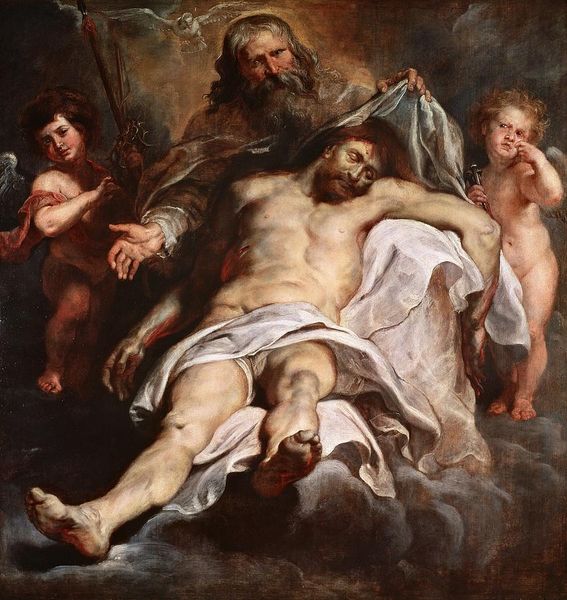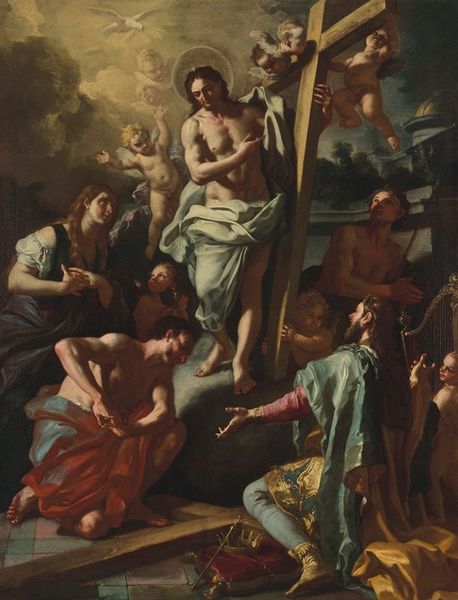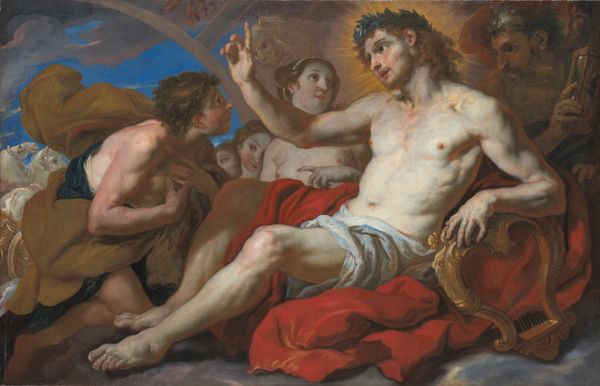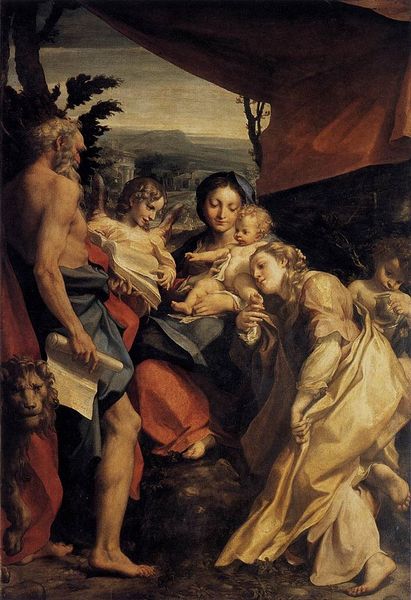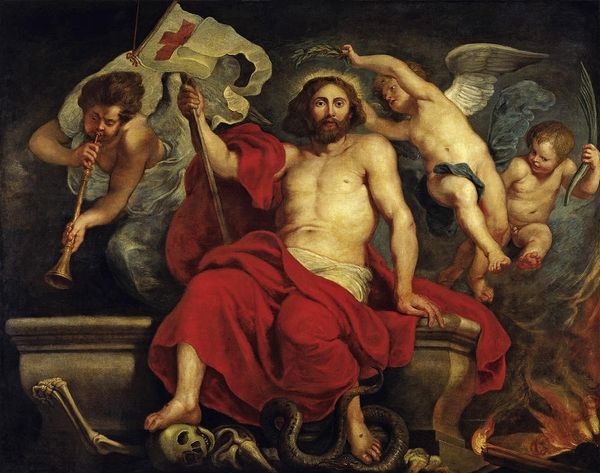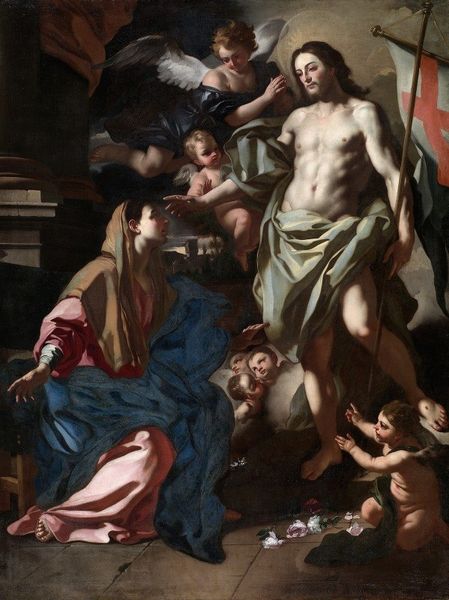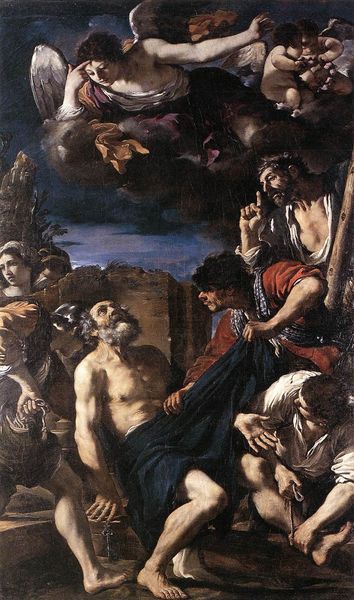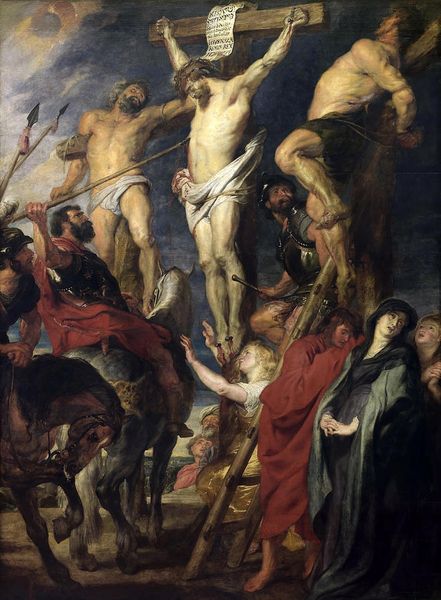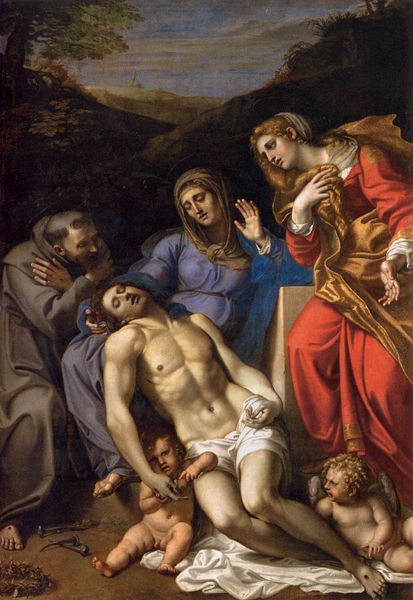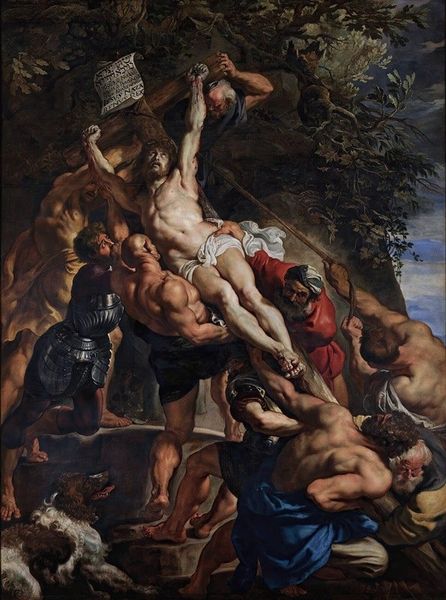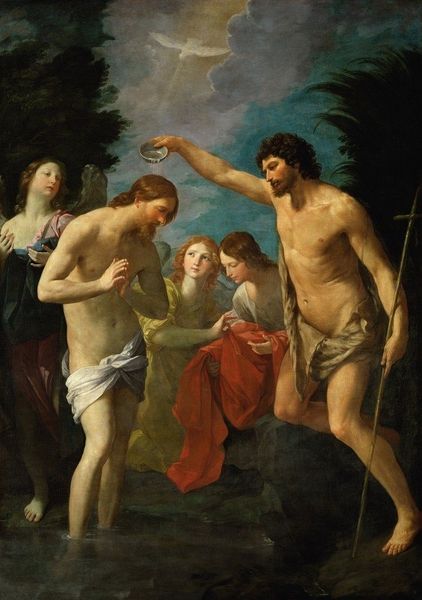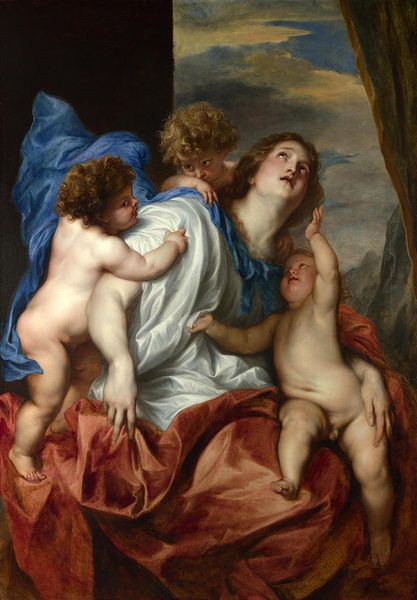
oil-paint
#
portrait
#
baroque
#
oil-paint
#
figuration
#
oil painting
#
history-painting
#
portrait art
Copyright: Public Domain: Artvee
Curator: Sebastiano Ricci's "Christ Mourned By Three Angels" is an emotionally charged baroque painting, and while undated, its stylistic features place it within his mature period. It’s rendered in oil paint. Editor: The somber tones really hit you first, don't they? The shadowed landscape contrasts with the pale, almost luminous body of Christ. It has a certain earthiness despite the presence of angels; the cloth around Christ looks simple and woven. Curator: Precisely, the baroque style is present here, influencing everything. Consider how the church used art to evoke an emotional response, pulling viewers into the story and faith on display here. Ricci uses strong diagonals and dramatic lighting to amplify this effect. Editor: Right, there's a deliberate theatricality about it, but it also makes me wonder about the materiality of suffering itself. Christ's body, laid bare and vulnerable, becomes a symbol of human experience of earthly toil, and exploitation throughout its whole narrative, its use by imperial structures. I am interested in the materiality that would then further construct an aura around the idea of divinity. Curator: That's an interesting perspective. But look closely: The angels aren't simply bearers of divine sorrow; they seem like figures plucked from contemporary life, draped in fabrics reflecting the economic realities of textile production and fashion. The painting invites wealthy citizens and the laboring class alike to identify with Christ’s sacrifice and see his death and its political context. Editor: Yes! And this use of angels highlights both the celestial and human realms, merging fine art with a practical social function to bring those ideas back to the contemporary production means of its time and intended use and cultural exchange, thus shaping the artwork as it is meant to represent. Curator: It also speaks to the art world as shaped by aristocratic and ecclesiastical patronage of the time. The production itself, and how that plays into societal control and access to that world is incredibly important to unpack here. Editor: So, as an object of veneration, this artwork reflects complex forces that converge into religious expression with its social implications, echoing back to those working hard and living every day while venerating the holy moment, it becomes incredibly grounded within a human reality through its deliberate materiality that reflects the historical means by which to make this form possible. Curator: Ultimately, this artwork offers insight into society at large in relation to its church influence. Editor: Materially constructed ideas about class and religion all synthesized within its aesthetic purpose.
Comments
No comments
Be the first to comment and join the conversation on the ultimate creative platform.
